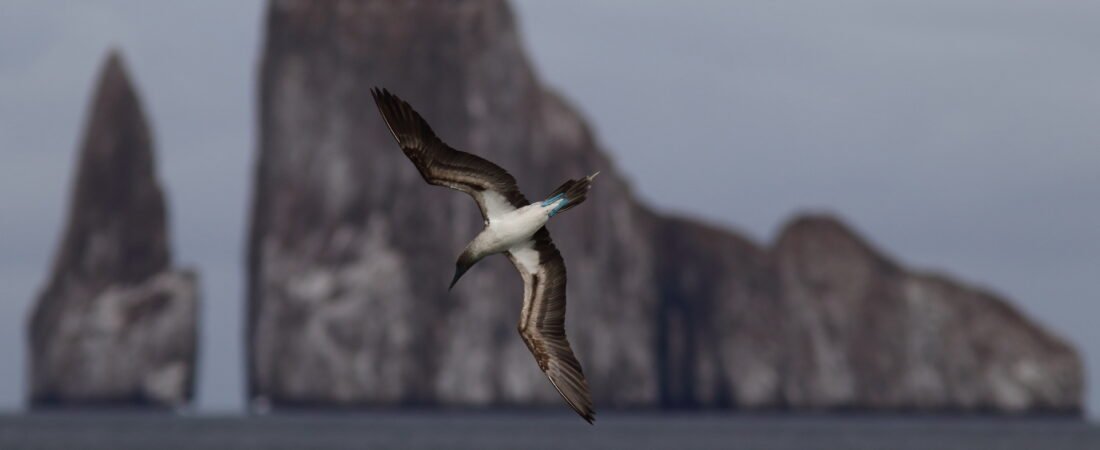This July, Eileen and I joined Wildside Nature Tours for 10 days on the Galapagos Islands in Ecuador. Located 700 miles from the coast of Ecuador, the bird list for all of the islands amounts to just 125 species. But are they ever special!
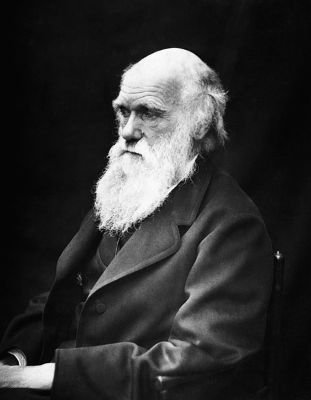
In 1831, a 22-year-old Charles Darwin joined the HMS Beagle for a five year journey of exploration. In 1835, he finally landed on the much-anticipated Galapagos Island where he spent five weeks. Scientist now recognize thirty-five bird species residing only on the Galapagos Islands. We found 26 of them. Why so many endemics? In the words of Charles Darwin,
“Seeing this gradation and diversity of structure in one small, intimately related group of birds, one might really fancy that from an original paucity of birds in this archipelago, one species had been taken and modified for different ends.”
Anyone who has learned anything about the Galapagos Islands has heard of the Darwin Finches. The island hosts 17 species of finches (we found 12 of them).
While the world generally credits the finches for guiding Charles Darwin in his earth-shattering theory of evolution. In his writings, Darwin said,
“My attention was first thoroughly aroused, by comparing together the numerous specimens, shot by myself and several other parties on board, of the mocking-thrushes, when, to my astonishment, I discovered that all those from Charles Island belonged to one species (Mimus trifaciatus); all from Albermarle Island to M. parvulus; and all from James and Chatham Islands belonged to M. melanotis.”
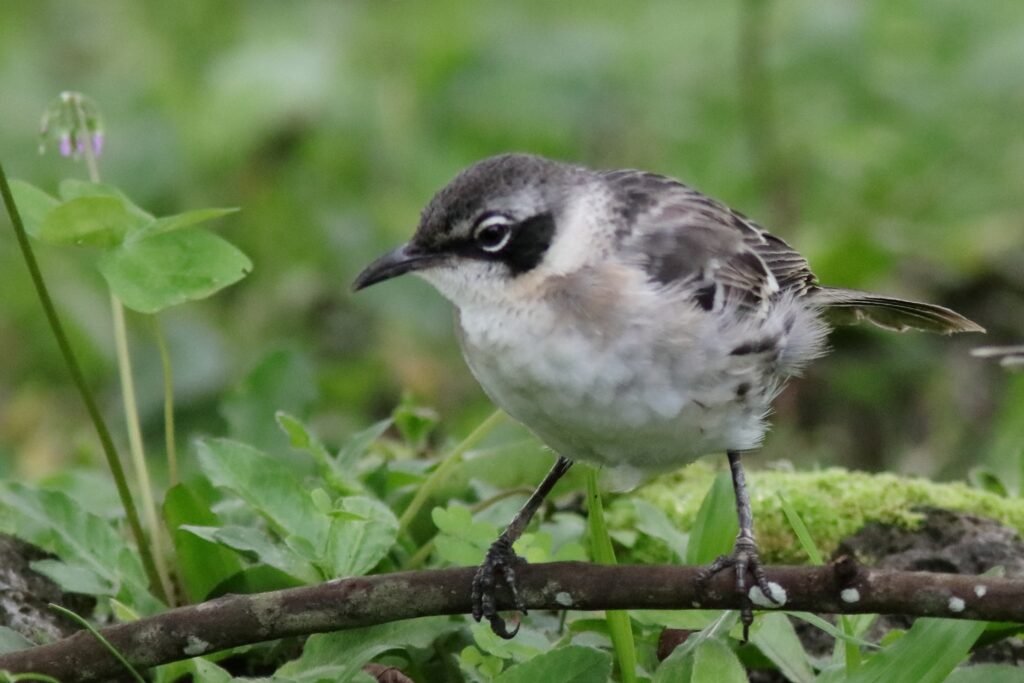
Darwin identified three distinct mockingbird species on the islands. Now, scientists recognize 4 species, and we were able to find each!
The most common mockingbird species is the Galapagos Mockingbird. Compare these to all other species to this one to understand the differences.
The Galapagos Mockingbird we found on four different islands. Note the heavy mask and relatively thin bill.
The other three are each restricted to a single island.
The Española Mockingbird, the largest of all of the mockingbirds, has more curvature to its stouter bill, a paler mask and crown with barring on the chest. It lives only on Española Island.
I did not get a picture of the San Cristobol Mockingbird unfortunately. It is smaller than the Española Mockingbird, but larger than the Galapagos Mockingbird. The birds overall color is daker than the Galapagos Mockingbird. The black is behind the eye as opposed to a mask. This species is only found on San Cristolbal Island.
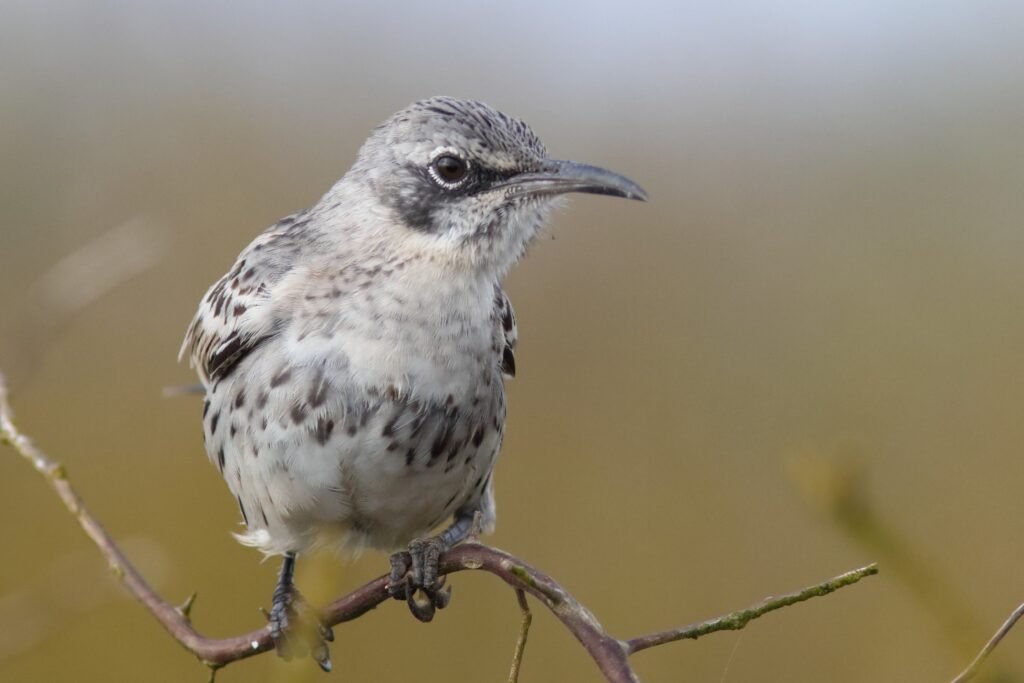
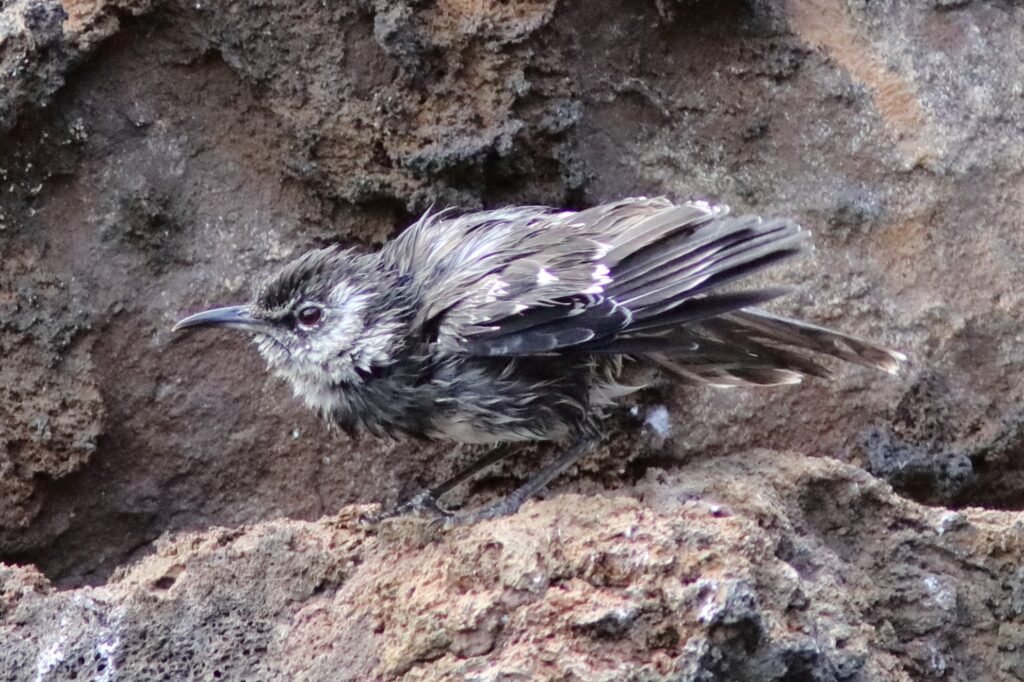
The rarest of all of the species is the Floreana Mockingbird. Originally Floreana contained many of these birds. By 1888 they were extirpated from Floriana. They had succumbed to rats, goats, and pigs which were introduced onto Floriana, one of the four inhabited islands. This species can only be found on two small island outcrops. We visited Champion Island where they think about 14 pairs survive. To protect the birds, we could not land on the island. A panga (zodiac) ride brought us up to the cliff face where this heavier, darker species with a hooded appearance as opposed to being masked lived. Three of them entertained us! Its chest has heavy dark patterns. To protect this and other species, the Ecuadorian Government has aggressively instituted an invasive species eradication campaign. Hopefully, someday this species can return to Floriana Island.
Many of the animals on the Galapagos Islands never developed a fear of humans. We learned that the Española Mockingbirds we not only fearless around humans, hanging around under our feet. They were downright friendly, letting photographers get so close the big lenses would not work. Plus, they were very curious.
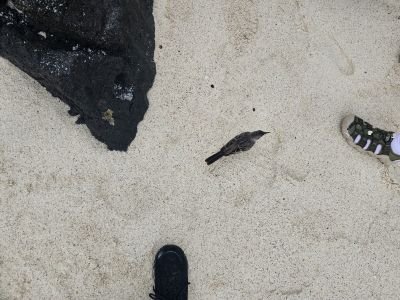
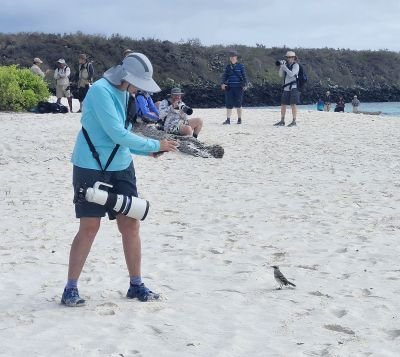
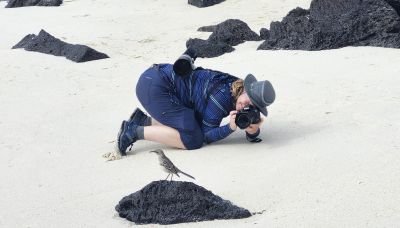
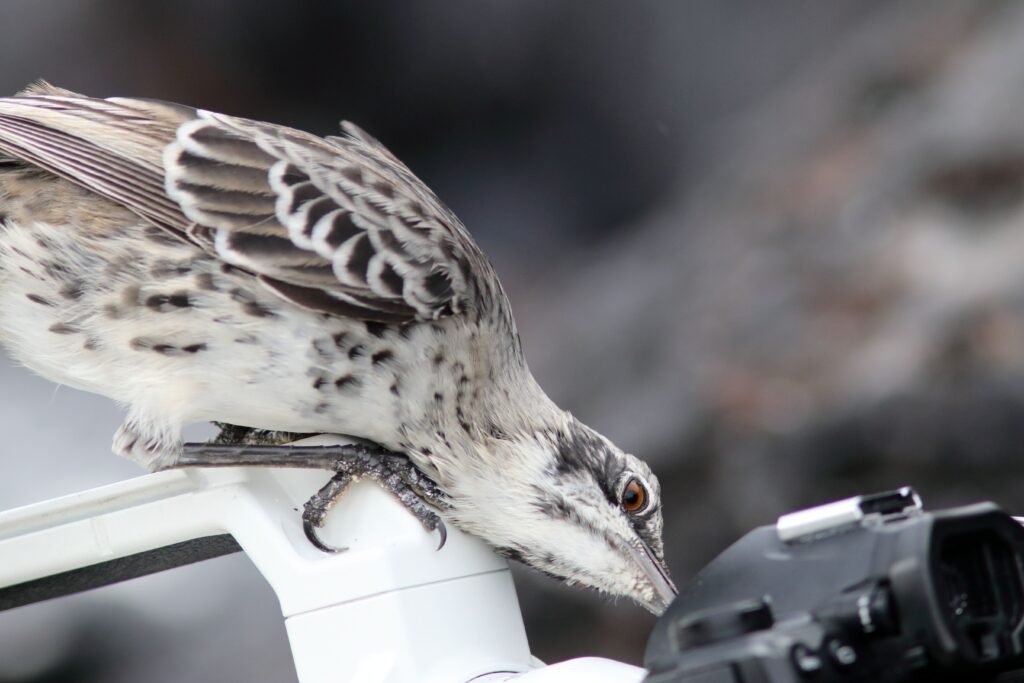
Eileen and I were delighted with the whole experience. Our tour, while focused on birds and photography, delved into the vast uniqueness of the islands, including its history and contribution to science. Future blogs will consider some of the other unique species found on the Galapagos Islands.
References:
https://www.galapagosislands.com/blog/darwin-and-origin-of-species/
https://darwinsfootsteps.com/darwins-mockingbirds/
Submitted by Bob Mercer
Photos by Bob Mercer

